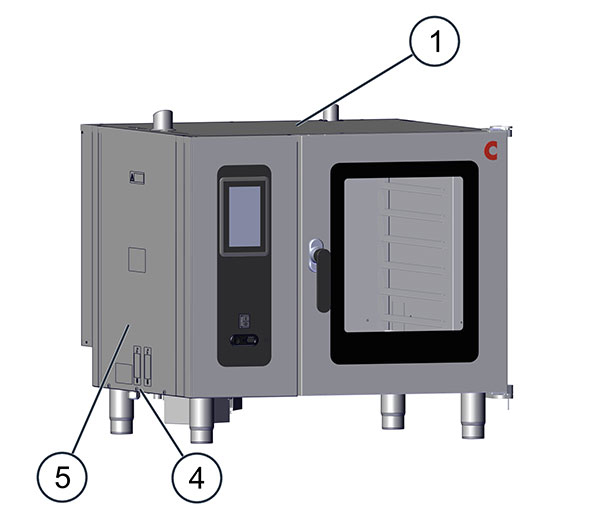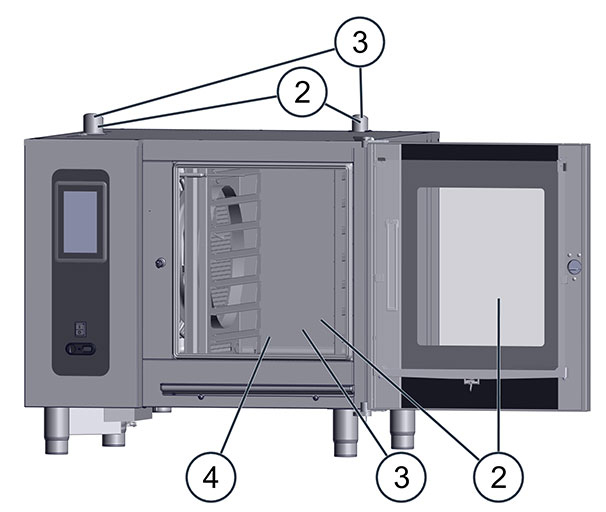Hazards arising from the appliance

The combi oven is designed to protect the user from all hazards that can reasonably be avoided by design measures.
The actual purpose of the combi oven, however, means that there are still residual risks; you must therefore take precautions to avoid them. A safety device can provide you with a certain degree of protection against some of these hazards. You must always ensure, however, that these safety devices are in place and in working order.
The nature of these residual risks and what effect they have are described below.
Hazard points
The following illustration shows a size 6.10 combi oven as an example for all appliances:


Item |
Safety hazard/cause of hazard |
Hazard locations |
|
|---|---|---|---|
1 |
On top of the appliance |
||
2 |
Air vent, ventilation port, appliance door and cooking chamber |
||
3 |
Air vent, ventilation port, cooking chamber |
||
4 |
Cooking chamber, cleaning-fluid connection |
||
5 |
Appliance case (cover for electrical parts) |
||
Proximity to flammable materials
Heat produced in the appliance during heating-up phases can cause the following hazards:
|
Fire hazard from heat given off by the appliance What can cause this?
How can I avoid the hazard?
|
Hot surfaces
During and after the cooking operation, heat produced by the appliance can cause the following hazards:
|
A risk of burns from hot surfaces Where?
How can I avoid the hazard?
|
Hot steam / vapour
Operating and otherwise working with the combi oven can lead to the following hazards:
|
Risk of scalding from hot steam/vapour Where? When?
How can I avoid the hazard?
|
Contact with cleaning agents
The following hazards can arise while cleaning the appliance:
|
Risk of chemical burns or irritation to skin, eyes and respiratory system from contact with cleaning agents and their fumes What can cause this?
How can I avoid the hazard?
|
Spraying down the appliance with water
Cleaning tasks performed on the appliance can cause the following hazards:
|
Risk of electric shock caused by a short-circuit When?
How can I avoid the hazard?
|




